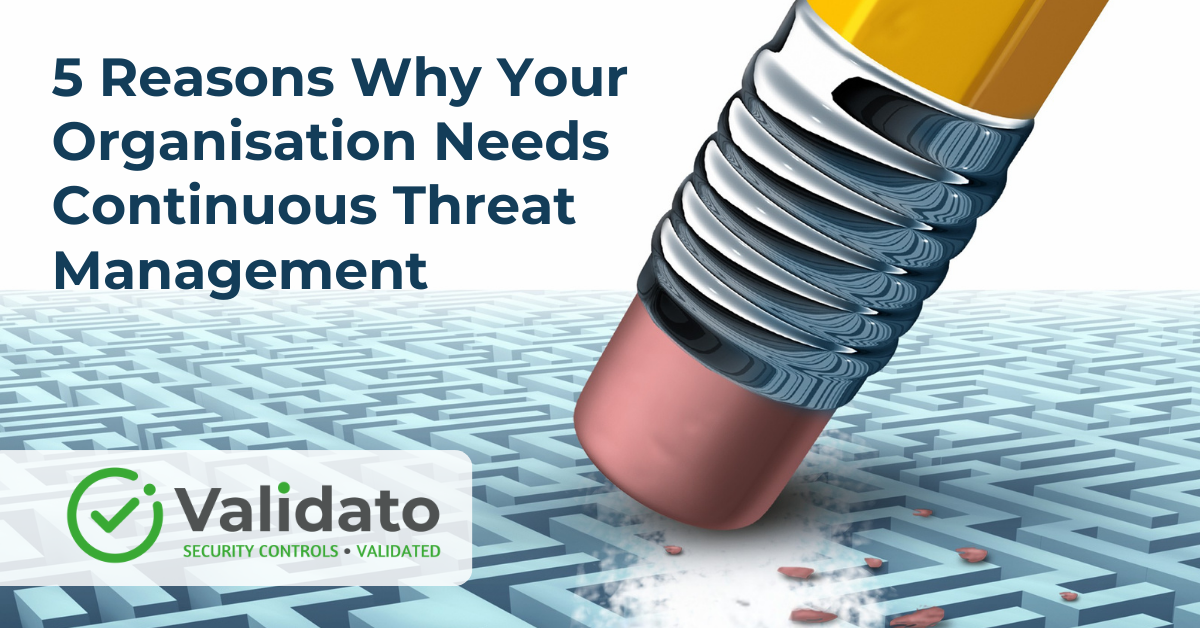In the dynamic cybersecurity landscape of 2025, the adage “it’s not if, but when” has never been more pertinent. Cybercriminals are more sophisticated, and attack vectors are constantly evolving. A reactive approach to security is a relic of the past. To stay ahead, organisations must embrace a proactive, systematic strategy: Continuous Threat Exposure Management (CTEM). CTEM is more than just a buzzword; it’s a fundamental shift in how we identify, assess, and address security vulnerabilities before they become catastrophic breaches.
Here are five compelling reasons why CTEM is indispensable for your organisation today:
1. Proactive Defence Against Real-World Threats
The most significant shift CTEM brings is its move from theoretical vulnerability scanning to real-world attack simulations. Traditional scanning might tell you about a missing patch, but CTEM goes further, simulating the tactics, techniques, and procedures (TTPs) of actual adversaries.
- MITRE ATT&CK Framework Integration: At its core, CTEM leverages frameworks like MITRE ATT&CK to test your defences against realistic attack chains. This means you’re not just patching known vulnerabilities; you’re verifying that your security controls can withstand sophisticated multi-stage attacks, including those used by ransomware operators or state-sponsored groups.
- Identification of Misconfigurations: A common blind spot in traditional security is misconfiguration, which often create easily exploitable pathways for attackers, even in systems with the latest patches. CTEM continuously identifies excessive privileges, insecure configurations, and other subtle flaws that expose your assets.
- Continuous Validation: Unlike point-in-time assessments, CTEM ensures that even minor changes in your environment (e.g., new software deployments, user role changes, network modifications) don’t inadvertently create new security gaps. This continuous validation provides an always-on understanding of your true security posture.
2. Streamlined Compliance with Evolving Regulations
For organisations operating in regulated industries, compliance is a constant, resource-intensive challenge. Regulations like NIS2, DORA, and UK Cyber Security & Resilience Bill demand not just the implementation of security measures but also the demonstration of their ongoing effectiveness and regular testing of cyber resilience. CTEM significantly simplifies this burden.
- Evidence based compliance: CTEM platforms, like Validato, automatically and regularly test security control effectiveness against threats and provide unbiased evidence based data on an organisation’s operational resilience to key cyber threats. This continuous record provides robust, reliable evidence of security effectiveness, eliminating the need for arduous, resource-intensive manual audits.
- Continuous Validation for Specific Requirements: By continuously validating security controls against industry-specific threat scenarios, CTEM ensures that your organisation is consistently meeting regulatory mandates, providing a demonstrable level of resilience that auditors can easily verify.
- Reduced Complexity: Instead of managing multiple disconnected tools for compliance, CTEM offers a unified approach that streamlines processes, reducing complexity and human error.
3. Robust Defence Against Ransomware and Emerging Threats
Ransomware remains one of the most pervasive and financially damaging cyber threats. CTEM provides a critical proactive defence by systematically identifying and addressing the specific misconfiguration and attack pathways that enable ransomware success.
- Simulated Ransomware Techniques: CTEM simulates the actual techniques used by ransomware, such as privilege escalation, lateral movement, and defence evasion. By testing these pathways, organisations can identify and remediate vulnerabilities before a real attack can unfold.
- Prevention Over Detection: Rather than solely focusing on detecting ransomware after execution, CTEM shifts the emphasis to preventing initial compromise and limiting an attacker’s ability to move laterally within networks.
- Environmental Coverage: Modern CTEM platforms are designed to identify misconfiguration across diverse environments, including Windows, Linux, and Mac systems, which are frequently targeted by ransomware attackers.
4. Maximising Security ROI on Limited Budgets
In an era of increasing cybersecurity spending scrutiny, organisations must ensure every dollar invested delivers maximum impact. CTEM helps optimise security spending by providing clear, continuous visibility into the actual effectiveness of security controls.
- Cost-Effective Validation: Instead of relying on expensive, infrequent penetration testing engagements, CTEM provides continuous, automated validation at a significantly lower operational cost. This allows for more frequent and comprehensive assessments within budget constraints.
- Optimised Tool Utilisation: CTEM provides insights into how effectively your existing security tools are performing, revealing redundancies or gaps. This visibility allows for targeted resource allocation, ensuring that investments are made in critical vulnerabilities and effective solutions, rather than overlapping or underutilised tools.
- Targeted Resource Allocation: By highlighting the most critical vulnerabilities and attack paths, CTEM enables security teams to prioritise remediation efforts and allocate resources precisely where they will have the greatest impact, leading to a higher return on security investment.
5. Bridging the Cybersecurity Skills Gap
The global cybersecurity skills shortage is a persistent challenge, leaving many organisations without the specialised expertise needed to identify and remediate complex vulnerabilities effectively. CTEM platforms are designed to address this skills gap directly.
- Guided Remediation: CTEM platforms provide clear, actionable guidance on how to fix identified issues. This “guided remediation information” empowers existing IT teams and general IT practitioners to improve security posture without requiring extensive, specialised cybersecurity expertise.
- Empowering Existing Staff: For organisations that cannot afford dedicated security specialists, CTEM democratises security expertise, making sophisticated vulnerability management accessible. This allows internal teams to perform practical tasks that directly enhance security effectiveness.
- Efficiency: By providing precise, step-by-step instructions, CTEM significantly reduces the time and effort required for remediation, improving operational efficiency even with limited staff.
Conclusion
Continuous Threat Exposure Management represents a fundamental evolution from reactive security to proactive resilience. By providing ongoing validation against real-world threats, CTEM empowers organisations to identify and address vulnerabilities before attackers can exploit them. This approach not only improves security effectiveness and streamlines compliance but also optimises spending and helps overcome the critical cybersecurity skills gap. As cyber threats continue to evolve in sophistication, CTEM is not just a strategic advantage; it’s a practical, cost-effective necessity for maintaining a strong and adaptive security posture.


